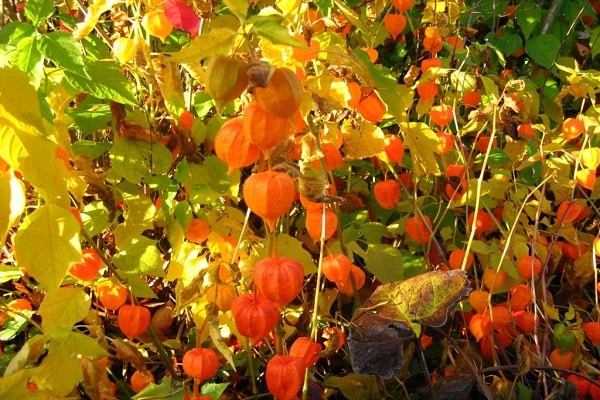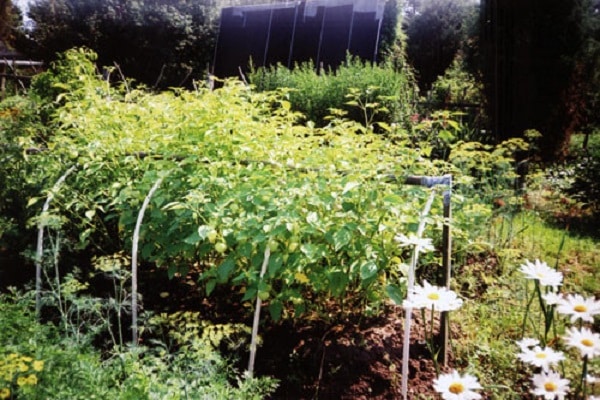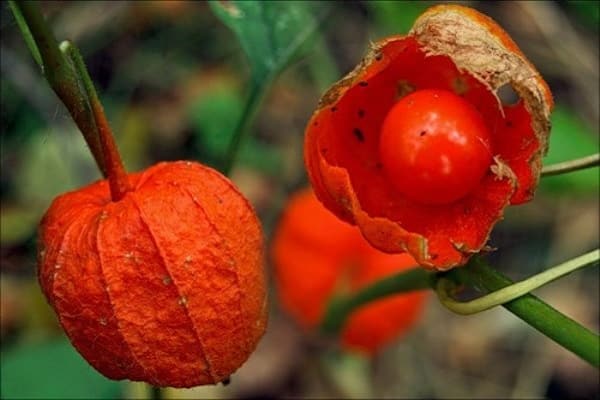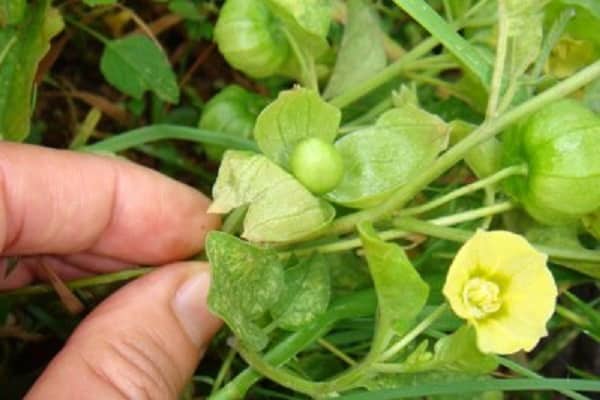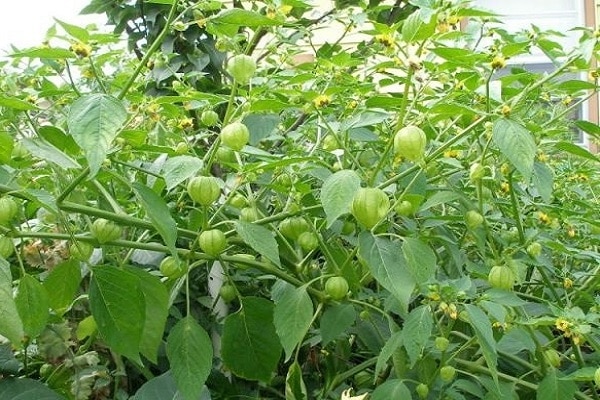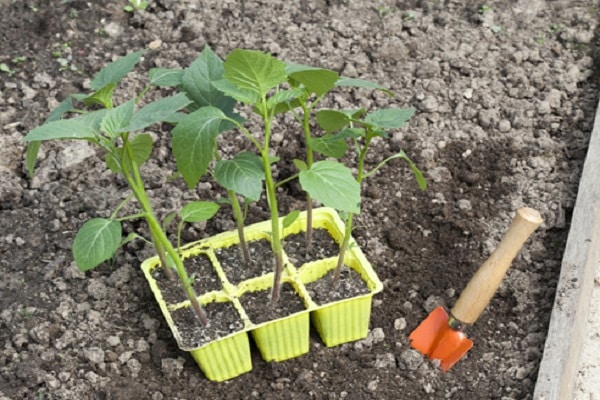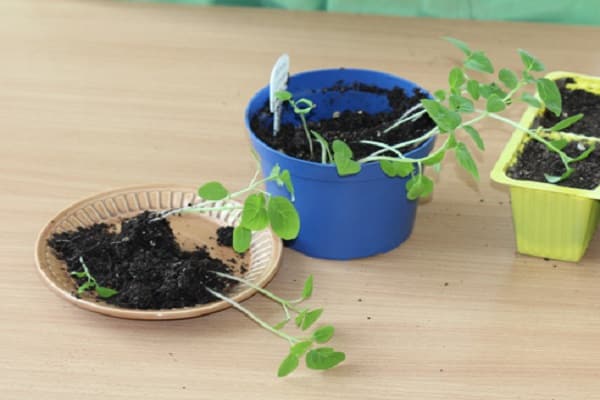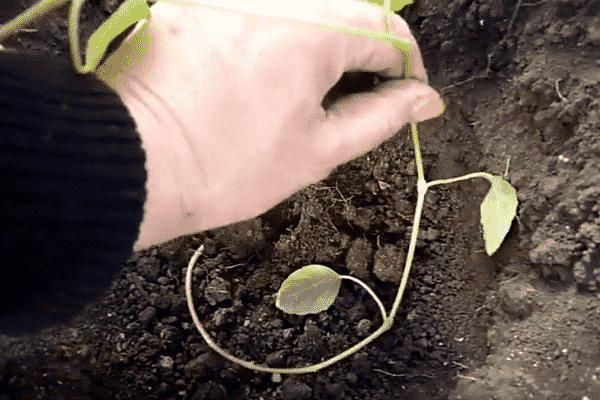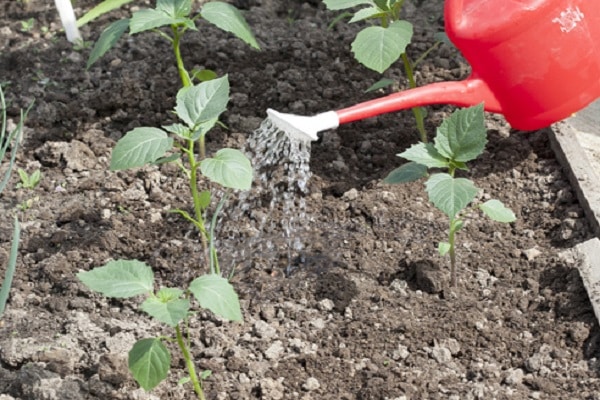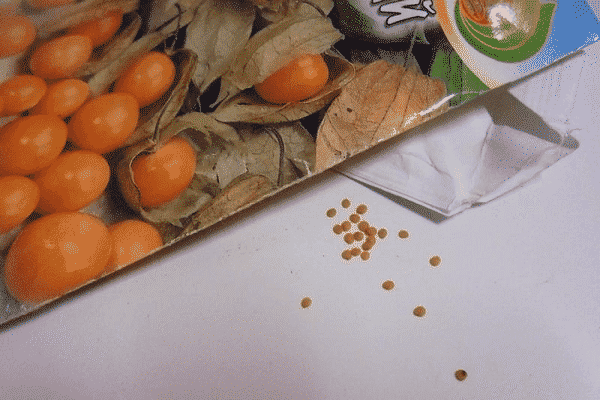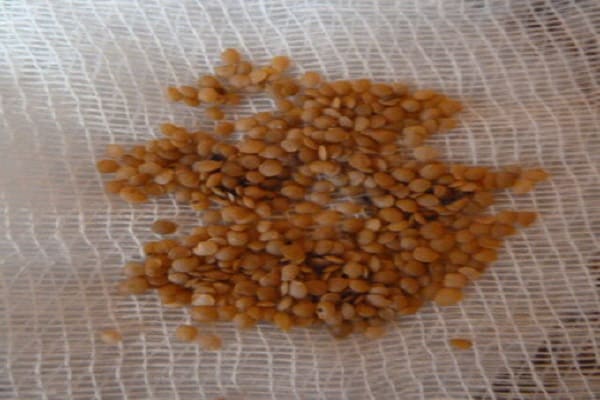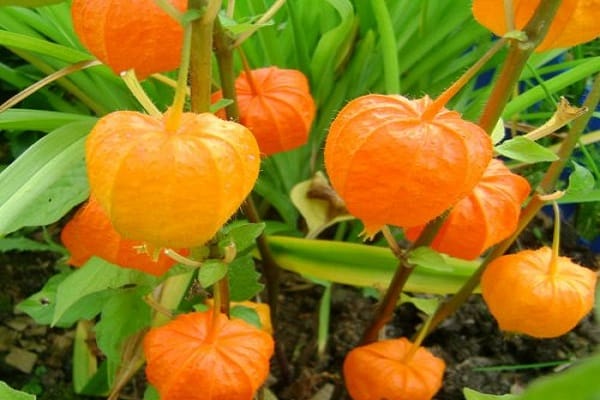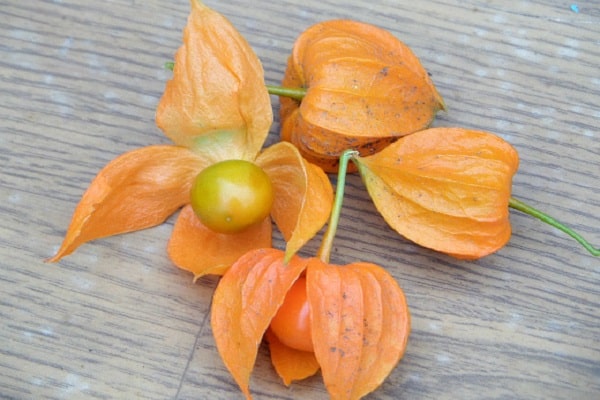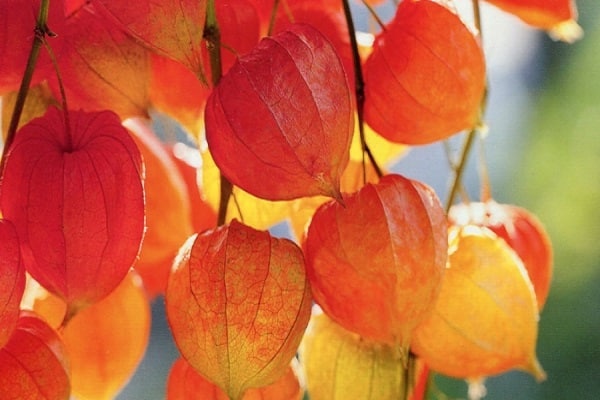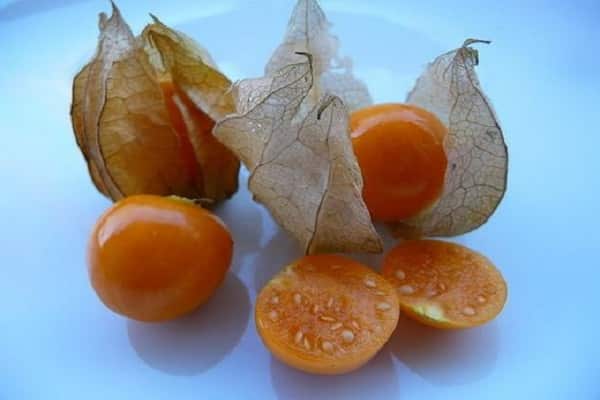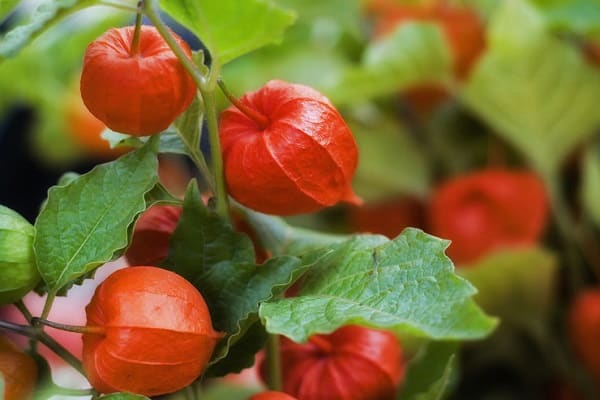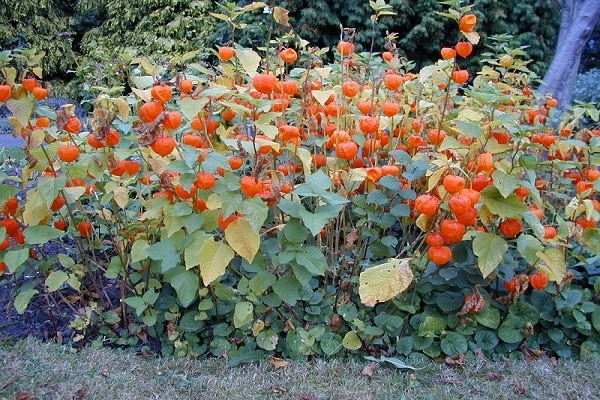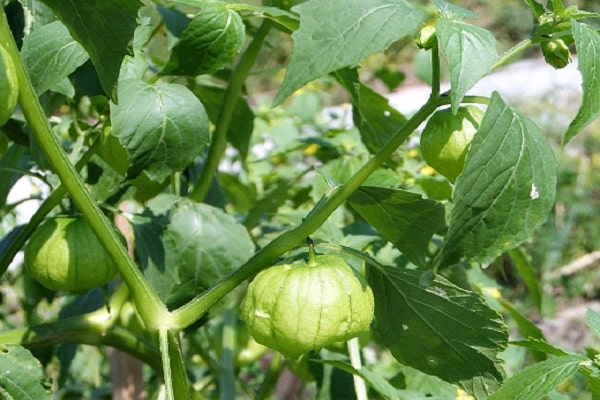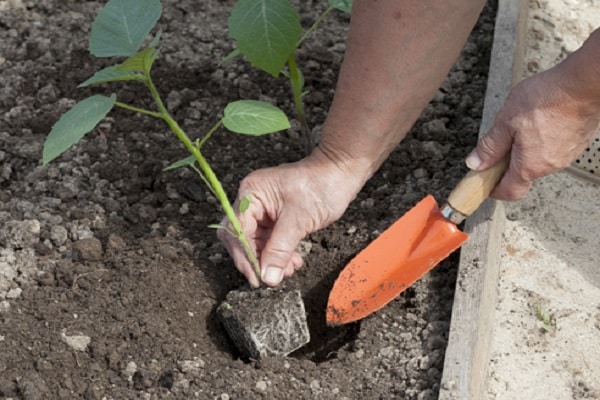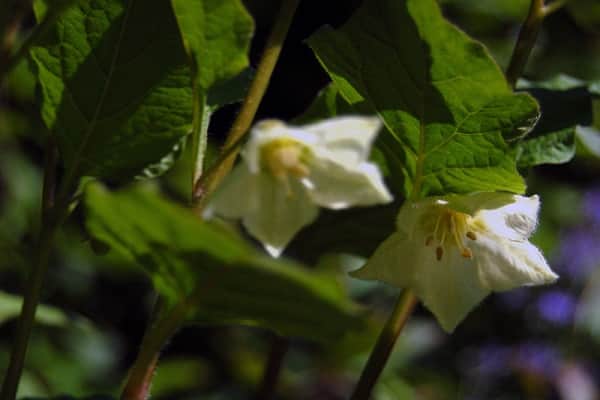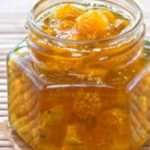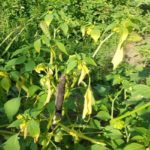Physalis is an ornamental plant - unpretentious, resistant to low temperatures, which allows novice gardeners to grow it. The plant attracts attention with its unusual, bright fruits, shaped like lanterns. Depending on the variety, they are an interior decoration or a tasty treat. To get a harvest of unusual physalis berries hidden in “lanterns” in open ground, it is worth knowing the features of planting and caring for it.
- Description and biological features of physalis
- Popular types and varieties of physalis
- Vegetable
- Strawberry and berry
- Izyumny
- Franchet
- Gold placer
- Korolek
- Pineapple
- Peruvian
- Decorative
- Physalis propagation
- Landing dates
- Secrets of growing physalis in open ground
- Preparing physalis for planting seeds
- Seed selection
- Growing seedlings
- Soil preparation
- Planting a plant on the site
- Features of caring for physalis
- Loosening
- Watering rules
- Weeding
- Top dressing
- Pest Control
- Protection from diseases
- Physalis: harvesting and storage
Description and biological features of physalis
The plant belongs to the largest genus of the Solanaceae family, growing in Asia, Europe and America. The name of the culture is translated from Greek as “bubble”; it is associated with the unusual shape of the plant’s cup, which has a bright, reddish-orange color.
Gardeners use more than one name for physalis - earthen cranberry or tomato, “emerald berry”, “blisterberry”, “dog cherry”, “marunka”. Due to the fact that vegetable varieties belong to the Tomato family, they are often compared to this vegetable.
There is annual and perennial physalis; this herbaceous plant can have branched, erect or curved, geniculate stems, bare or covered with a sparse pubescence at the top. Their height varies from 20 to 120 cm, and over time the stems at the base become woody.
The plant has opposite leaves, single, axillary flowers that are located along the entire stem. The calyx of the flower is bell-shaped, as if swollen, it contains orange or red berries that look like small balls. The fruits have a very pleasant aroma, and although physalis is an ornamental crop, in some of its varieties they are edible and even very tasty. The ripening period depends on the variety and conditions in which physalis grows.
Popular types and varieties of physalis
There are a large number of varieties of this nightshade plant, but not all of them are the most popular among gardeners. And besides, before choosing, you should consider whether you need a bladder to decorate your garden and home, or whether you want to taste its delicious fruits.
Vegetable
Physalis of this species is edible, it is highly resistant to low temperatures and produces an abundant harvest of large (up to 50 g) fruits. They are used in cooking and can be stored for a long time.
Strawberry and berry
These berry crops can be classified as heat-loving plants; they produce small fruits - weighing no more than 10 g. Physalis berries of this variety can be eaten fresh, and various desserts are also prepared from them - marmalades, jellies, jams, preserves.
Gardeners may encounter difficulties when growing berry physalis - it takes longer to ripen than representatives of other varieties. But this disadvantage is fully compensated by the high yield and incredibly pleasant taste and aroma of the fruit.
Izyumny
Physalis of this variety has very tasty fruits - sweet, with a slight sourness, they taste and smell like pineapple. Physalis raisin juice is similar to tangerine juice.
The culture of this variety grows better from seedlings, the fruits are stored for up to 4 months, and gradually wither a little, which makes them look like raisins.
Franchet
More often, the ornamental plant is cultivated as an annual; the height of the stem reaches 90 cm. Up to one and a half dozen “lanterns” - fruits dressed in a bright cup - can appear on one shoot.
Gold placer
An early ripening variety of physalis, the height of the bushes does not exceed 30-35 cm. The berries are golden, weigh 5-7 g, as a rule, one bush gives a bountiful harvest.
Korolek
It belongs to the early ripening varieties; its berries are used for preparing desserts and canned vegetable dishes.
Pineapple
This variety, despite its southern origin, can also be grown in central Russia. It ripens very quickly - the first harvest is ready by the end of June. The fruits of the pineapple bladder have a rich sweet taste with notes of pineapple; they can be eaten fresh and used for preparations.
Peruvian
Physalis from Peru loves light and warmth, so it is not often found in garden plots. And if summer residents decide to plant it, then only if protected soil is provided.
The yield of the variety is low, the berries weigh 3-9 g, they have high nutritional value and are a storehouse of useful microelements and pectin. The flesh is juicy, bright or brownish-orange, with strawberry and pineapple flavors.
Decorative
In the garden, this plant becomes a decoration - bright, festive, but do not forget about its toxicity. Blooming decorative physalises are covered with neat orange lanterns.
Physalis propagation
In addition to seed propagation, dog cherries can be grown from lateral shoots and cuttings. In ornamental species, many shoots form from the rhizome, so in spring or autumn, part of the root system with shoots can be dug up from the main root and replanted.
Another method is cuttings, for which in July you should cut off the tops of the stems, which have several nodes and internodes, and plant them in loose soil, deepening them halfway and covering them with perforated film. When turgor is restored on the leaves of the cuttings, the film can be removed.
Caring for cuttings during rooting is simple; they must be watered promptly and protected from direct sunlight.
Landing dates
When to sow seeds can be calculated using simple calculations. It is advisable to plant the plant in a permanent plot at 45-50 days of age. You should choose the optimal day based on the weather conditions of the region, and count the readiness period of the sprouts - 4-4.5 weeks. In the middle zone and the Urals, this period falls at the beginning of April; a more accurate date can be checked against the lunar calendar for sowing nightshade crops.
In Siberia, the climate is harsher; here you can expect spring frosts even at the beginning of summer, and autumn frosts - already in August. Therefore, in the absence of a greenhouse, it is better to give preference to physalis, which ripens quickly - the variety Moscow early 2045, Confectioner, strawberry.
It is recommended to sow seedlings in April, and then plant them not in open ground, but under agrofibre or film. Transplantation is carried out from mid to late May, depending on weather conditions.
After the first ten days of June, the shelter is removed and returned to the end of the summer period.
Secrets of growing physalis in open ground
Not all plant varieties can be grown in such conditions; in addition, the success of planting depends on climatic conditions. Some types of “blisterweed” need to be sown with seeds in open ground, while others are grown as seedlings.
To grow physalis in your country house, garden or garden, it is worth considering some of the needs of this unusual crop:
- The heat-loving “bubble plant” needs an abundance of sunlight, so you need to choose areas with good lighting.
- In the place where it grows, after rain, moisture should not accumulate and stagnate.
- Sprouts feel better in pre-cultivated soil in which representatives of other crops grew before them. This will contribute to more active growth of the planting and increase productivity.
- Physalis does not grow well next to weeds, so it will require regular weeding.
- Emerald berries are not suitable for acidified soil; if the plant is placed in such conditions, it will not take root or will constantly get sick.
You can make the soil more suitable for this crop using liming - additional components are added to it: quicklime, wood ash, fluff or dolomite. When using supplements, you must follow the recommendations provided in the instructions.
Preparing physalis for planting seeds
The seed material of the “Chinese lantern” is small, so you should not sort it out individually. To select good seeds, they should be tested in a 5% saline solution. Those that float to the surface are discarded; seeds that sink to the bottom are considered suitable.
Before sowing, they must be disinfected - soak for 30 minutes in a weak solution of potassium permanganate. Afterwards, the material is washed, dried and stored until planting.
If physalis is to be sowed directly into open ground, then these activities can be carried out on a personal plot, before placing the seeds in the soil.
Seed selection
Gardeners are often faced with the problem of acquiring high-quality seed, so they try to get it on their own plot. The simplest selection involves selecting seeds from the best plants:
- in strawberry and Peruvian bladderwort, these are representatives with the highest yield, large-sized fruits and high taste;
- with Mexican physalis, selection turns out to be more complicated - the plants inherit the characteristics of both the pollinated and pollinating bladder, so it is better to take seeds from the fruits of various bushes and then plant them in separate areas.
Experienced gardeners can carry out independent crop selection, crossing different varieties in order to obtain the most productive plant with fruits that meet their requirements. But most often this is done by professional seed growers.
Growing seedlings
In many ways, growing Chinese lantern sprouts is similar to obtaining tomato planting material. So, just basic knowledge about this process is enough to get a positive result.
Soil preparation
As a primer, you can use a finished product intended for other vegetable crops: tomatoes, peppers, eggplants. And if you have free time, it is better to make the soil yourself. It will require:
- 40% peat;
- 25% humus (rotted compost);
- 25% land (garden or turf is suitable);
- 10% river sand (it must be washed).
The resulting mixture should be sifted, and in order to eliminate the possibility of infection with fungal diseases and reduce the amount of weeds, it is advisable to steam it for an hour.
Sow the bladderwort in the area from mid-spring to early May, placing the seeds in a thin strip in the furrows, the distance between them should be 25-35 cm. The bed with seedlings must be thinned out so that the interval between sprouts is at least 20 cm; removed sprouts can be planted separately - they have a high survival rate.
Planting a plant on the site
Earlier planting of physalis sprouts with 3 leaves in the ground can be planned, but only with the provision of mandatory shelter. Plants with 6-8 leaves can be planted in open soil, but only if the weather is warm and the likelihood of frost is excluded. The most favorable air temperature is +20…+22 0WITH.
Those who want to get a bountiful harvest and beautiful vegetation should pay attention to the following features of the process:
- Seedlings of tall and medium-sized varieties require an intermediate transplant into a more spacious tank before rooting in open ground.
- Hardening is indicated for all “young” physalises - the pots with seedlings should be kept in a shady area where direct sunlight does not fall.
- Since most dog cherry bushes branch quite well, it is better to replant the plants using a checkerboard pattern, the average step size is 50 cm.
- Representatives of tall varieties must subsequently be tied up; it is advisable to provide for this when planting them in the ground.
- The sprout should be immersed in the hole until it reaches the first true leaf.
- If the seedlings have outgrown, then they are planted as follows: 1.5 liters of water are poured into the hole and the seedling is placed tilted into the water, this will allow the roots to straighten out on their own; then the hole must be covered with soil and compacted.
- Sprouts that are planted in due time do not require such manipulations: they are placed in the ground in the traditional way, and after the procedure they are well watered.
To facilitate further care of the crop, it is recommended to mulch the soil using peat.
Features of caring for physalis
Having planted the sprouts of an exotic plant in the ground, you need to continue to take care of them. Care is similar to growing tomatoes, only physalis does not need pinching - fruits are also formed on the side branches.
Loosening
It is important to avoid crusting and cracking of the soil. To do this, you should take time to loosen it.
Watering rules
It is recommended to water the seedlings regularly until August 15-17; later, it is better to reduce the frequency of watering - this will speed up the ripening process of the berries.Physalis is not afraid of heat and drought; it is highly resistant to such conditions.
In hot weather, you can water the bushes a couple of times a week, and when the air temperature is moderate, one watering every 7-8 days is enough.
Weeding
This event needs to be carried out, but it is enough to do it once every 3-4 weeks, not more often.
Top dressing
Half a month after transplanting the seedlings into the ground, you can start feeding them. Experienced gardeners recommend fertilizing after watering. You can use both organic and mineral compounds, but the best result can be achieved if you alternate them every one and a half to two weeks.
For physalis, the following fertilizers can be used:
- Ammonium nitrate - a solution is prepared at the rate of 10 g of the substance per 5 liters of water. It is best to use after picking, when the leaves acquire a pale greenish color.
- Organic (poultry droppings, cattle manure) - mullein is diluted at the rate of 1:10, manure - 1:15, about 5 liters of the composition are introduced for every 1.5 square meters. m. This feeding is very useful for weakened vegetation, effective after picking, during flowering and fruit formation.
- Superphosphate is a complex fertilizer for vegetable crops. The composition is prepared from 15 g of the substance per 5 liters of water.
- Wood ash - it is recommended to apply throughout the growing season; dilute at the rate of 15 g of the substance per 5 liters of water.
When introducing fertilizers, you should be careful and ensure that the compounds do not get on the leaves and stems of physalis, as they can cause burns.
Pest Control
There are several particularly “persistent” and dangerous pests that are partial to earth tomatoes and can ruin them and deprive the owner of the harvest:
- The mole cricket is a large orthopteran insect that harms the root system of physalis by gnawing the roots. You can protect the crop from it by digging up the soil in spring and autumn - this activity will lead to the destruction of the pest’s nests. In summer, it is recommended to loosen the soil by at least 20 cm. You can scare off mole crickets by watering the plant with a solution of bird droppings, as well as by planting marigolds next to the bladder.
- Aphids - this dangerous parasite is a carrier of late blight. Protection against it is provided by insecticides, which should be used to treat the bushes 3-4 times per season.
- Wireworm - the larvae of all click beetles are a threat to roots and tubers, which cause serious damage to the underground part of the plant. It is recommended to add ash to it when digging the soil - beetle larvae do not like alkaline soil.
Protection from diseases
In general, physalis is a healthy crop that is disease resistant. However, under negative conditions, the risks of developing diseases are present.
Seedlings growing in conditions of high humidity can be affected by a fungal pathology called “black leg”. It is not difficult to notice the disease - the base of the stem turns black and the sprout dies.
As a rule, with proper care of seedlings and seedlings - loosening, watering, thinning - disease can be avoided.
Another disease that does not spare all nightshades, late blight, poses the greatest threat to crops during fruit ripening. The fungus infects the berries, and they become covered with brownish subcutaneous spots; such fruits are inedible.
In the fight against late blight, the most effective way is to spray the above-ground part of the plant with Bordeaux mixture, from which the solution is prepared.The event is held in advance, before the bushes are covered with ovaries.
Physalis: harvesting and storage
It is necessary to collect bladderwrack fruits together with the “lanterns” surrounding them, which dry out by this time. It is better to do this in dry weather, 45-60 days after planting the seedlings in the ground.
The ripening of berries occurs unevenly: the fruits from the lower part of the stems ripen first and fall off. If collected immediately, they can be eaten or processed. They are also suitable for obtaining seed material.
In order for physalis to be stored well in winter, it should be properly prepared. Decorative perennial varieties produce dry bouquets of amazing beauty. To do this, you need to cut the plant, remove the leaves, and hang the stems with “bubbles” filled with berries to dry.
It is advisable to mulch an area with perennial bushes with peat for the winter.
After harvesting the fruits, the annual physalis must be disposed of and the soil is dug up.

